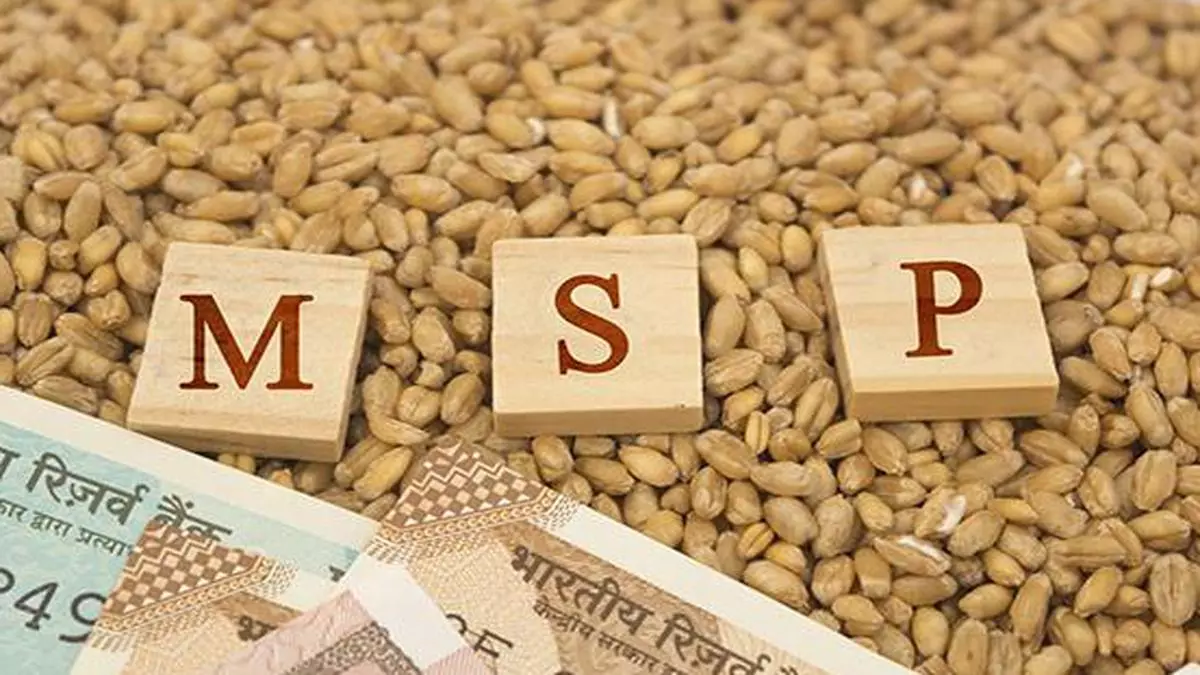Budget 2024: Revamping MSP to address challenges
The agriculture sector in India is the nation’s biggest employer of labour, engaging nearly half of its population as of 2022 and contributing upwards of 15 per cent to its GDP. Although still shy of desired results—considering the potential of the sector and its global dominance in terms of numbers—the agricultural industry has remained resilient despite all odds. As the country strives to feed its over 1.4 billion people and have a lot more for exports, there is a need to combine efforts towards improved productivity.
A critical factor to consider is the wellbeing of the farmers who work tirelessly to ensure the continued supply of food to Indians and a significant supply to other parts of the world to earn the nation huge foreign exchange, which stood at $52.5 billion in 2022-23 fiscal year. With the issue of the minimum support price (MSP) once again taking the front burner, perhaps the time has come for the government to consider a revamp in the present, and look out for future alternatives for sustainable agriculture growth in the country, especially as the 2024 budget comes into action.
While the intention of the Union Government is commendable, there are existing gaps between what is intended and the reality, especially considering recent findings that crops procured by the government is only around 6 per cent of total produce. Therefore, it is important for the government to continue to make adjustments and continuous expansion of the programme as they have done in the last three years, resulting in more crops being captured under the minimum support price (MSP) programme.
Addressing the pain points
Continuous increase in credit to agriculture in India is praiseworthy, rising to about Rs 20.7 lakh crore in 2024 from less than Rs 7 lakh a decade earlier. Part of this credit is often allocated to MSP. The essence of MSP is to ensure that Indians, especially low-income members of the population are able to afford vital food crops necessary for wellbeing and nutrition. Hence, MSP is an important policy which has been sustained by the Modi-led government over the last two terms, with hopes that the policy will be further expanded to cover more crops.
Expenditure for MSP has risen by more than 100 per cent in the past decade to Rs 2.28 lakh crore in 2022-23 for 1,062.69 lakh tonnes of grains, across 22 crop types. The total foodgrains produced by India in the period was 3.3 billion lakh (330 million) tonnes. Although there’s still a long way to go in terms of achieving near total coverage, but it is also important to look at other aspects of the sector where attention might be needed to bring about a win-win situation for all parties.
Finding sustainable alternatives
One way to encourage sustainable agriculture and food security is by increasing linkages between farmers and consumers. The establishment of more agricultural markets (mandis) across all states and Union territories is a good intervention that will bring about desired results. This is an area where state governments should play a significant role in order to boost the agri economy in their states.
Furthermore, the encouragement of crop diversification is another way to address the current challenges of MSP. By supporting farmers with inputs and incentives to focus on cash crops and nutritional crops with high socioeconomic potential, farmers can improve their income, support their families and communities, and ensure the continuous production of food crops for Indians and the rest of the world. Promoting the cultivation of high-value crops will also further spur growth and improve farmers’ livelihoods.
There is also the need to enhance agricultural infrastructure across the country, delineating land for agriculture, supporting farmers with irrigation, providing mechanisation, and encouraging the adoption of emerging technologies to address low yield and enhance productivity. Added to this is a call for a policy shift towards livestock and horticulture. Already a world leader in terms of egg, meat, and fish production, India’s livestock segment has immense potential for growth, and can surpass the 4.11% which it currently contributes to the nation’s GDP with the right policies.
On the other hand, the production of ornamental plants and architectural landscaping is a budding industry that requires apt attention if the nation seeks to entrench diversification and transform its vast potential into tangible outcomes for its teeming population.
The author is Managing Director, Insecticides (India) Limited
